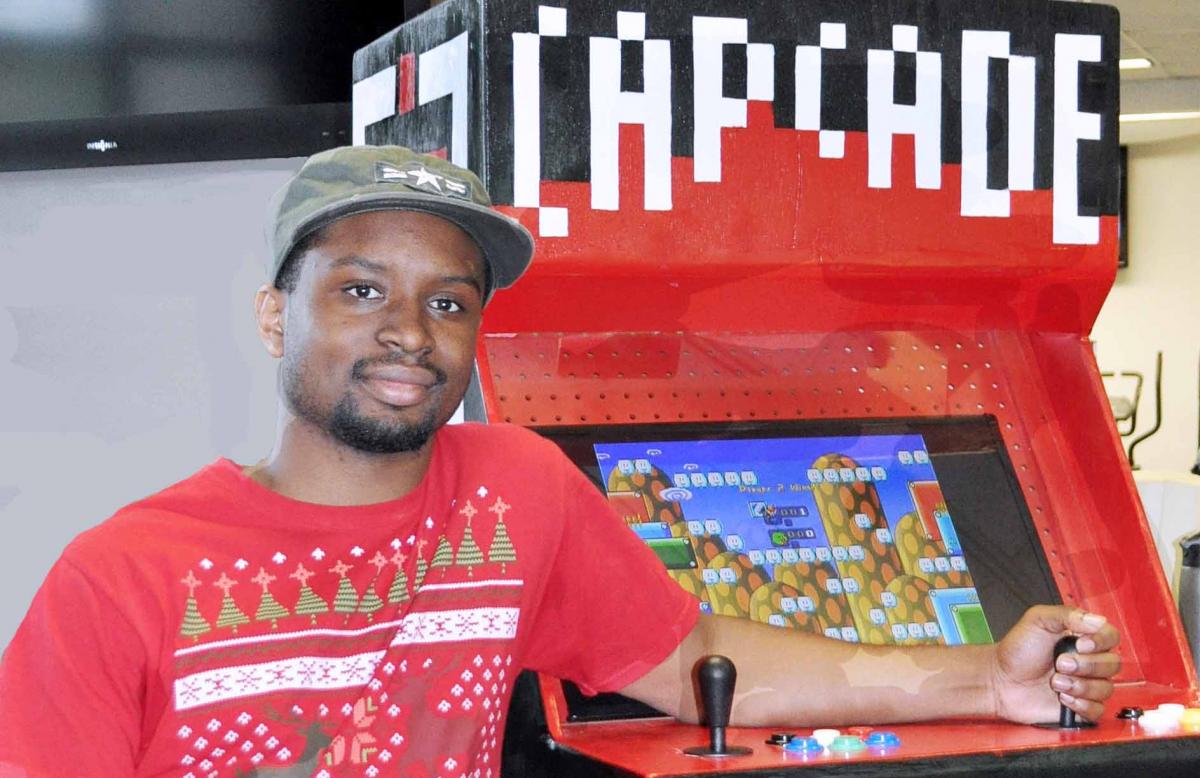With help from friends, student’s vision becomes reality
December 31, 1969When Bryant Rogers II walked across the stage to receive his computer engineering degree from Capitol Technology University this May, he had many accomplishments to be proud of. He is a recipient of Capitol’s golf scholarship, awarded annually to a student with a strong academic track record. At Commencement, Rogers received an additional honor: he was a co-recipient of the university’s Distinguished Student Service award, together with fellow graduate Karen Tavarez.
 During his time at Capitol, Rogers not only excelled academically, but found time to contribute to campus life. During the blizzard of 2014, he was part of the group that built a now-legendary snow cave near the student dorms. While that massive edifice vanished with the advent of warmer weather, Rogers has since spearheaded another project that is not subject to the changing seasons. Thanks to the efforts of Rogers and fellow students, Capitol’s student center is now home to a Linux-driven arcade game console, dubbed Capcade.
During his time at Capitol, Rogers not only excelled academically, but found time to contribute to campus life. During the blizzard of 2014, he was part of the group that built a now-legendary snow cave near the student dorms. While that massive edifice vanished with the advent of warmer weather, Rogers has since spearheaded another project that is not subject to the changing seasons. Thanks to the efforts of Rogers and fellow students, Capitol’s student center is now home to a Linux-driven arcade game console, dubbed Capcade.
The idea occurred to Rogers one day as he was mulling over ways to enhance the student center, which serves as a social hub for students between classes.
“I thought it would be great to have an arcade there,” Bryant explains. “But they’re way too expensive. As an engineer, you’re always looking for ways to make something better and cheaper.”
He continued to think about the concept and talk it over with friends. At some point, he says, the recognition came that it could actually be done. A group of students, he saw, could indeed build arcade and program it with any number of in-demand games.
He also realized that it would make a good senior project.
“My friends thought it was a great idea, and they started helping me. Everything came into place,” he says.
“We had a business student who secured funding, a computer science major who worked on the programming, two electrical engineering majors who helped me with the soldering, and a cybersecurity student who worked on the interface,” Rogers said. “The project brought all these different majors together.”
His team also included younger students, who can continue to maintain the arcade now that Rogers has moved on.
The result of their efforts, Rogers said, is a machine that surpasses most commercial equivalents.
“Most arcades, besides costing too much, only feature one game per machine,” he said. “Ours is simpler, cheaper, and open-source. It doesn’t require expensive parts if something happens to it. It’s customizable and can offer a variety of games on the same console.”
“I put out a list asking for game suggestions and it filled up in one day, he said. “People love it.”


